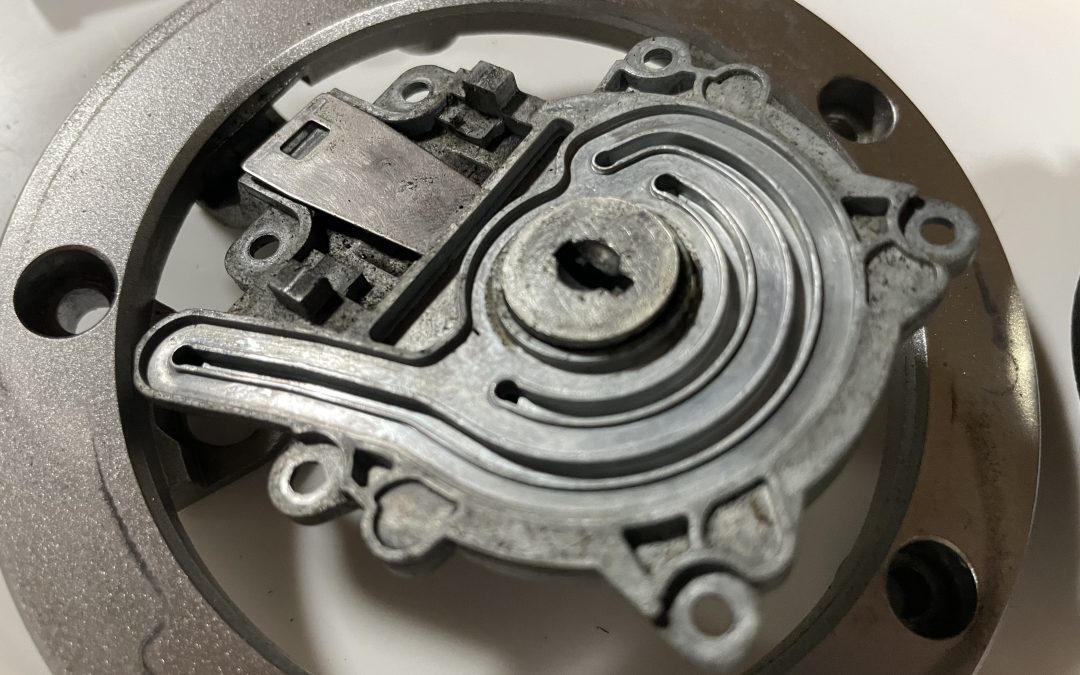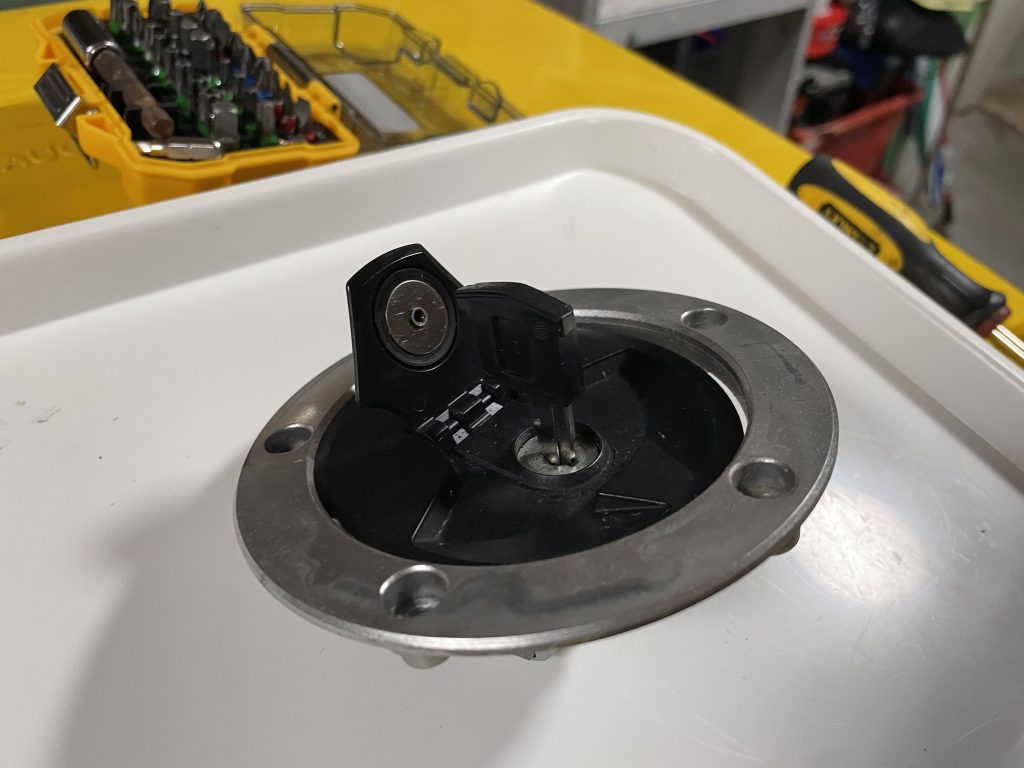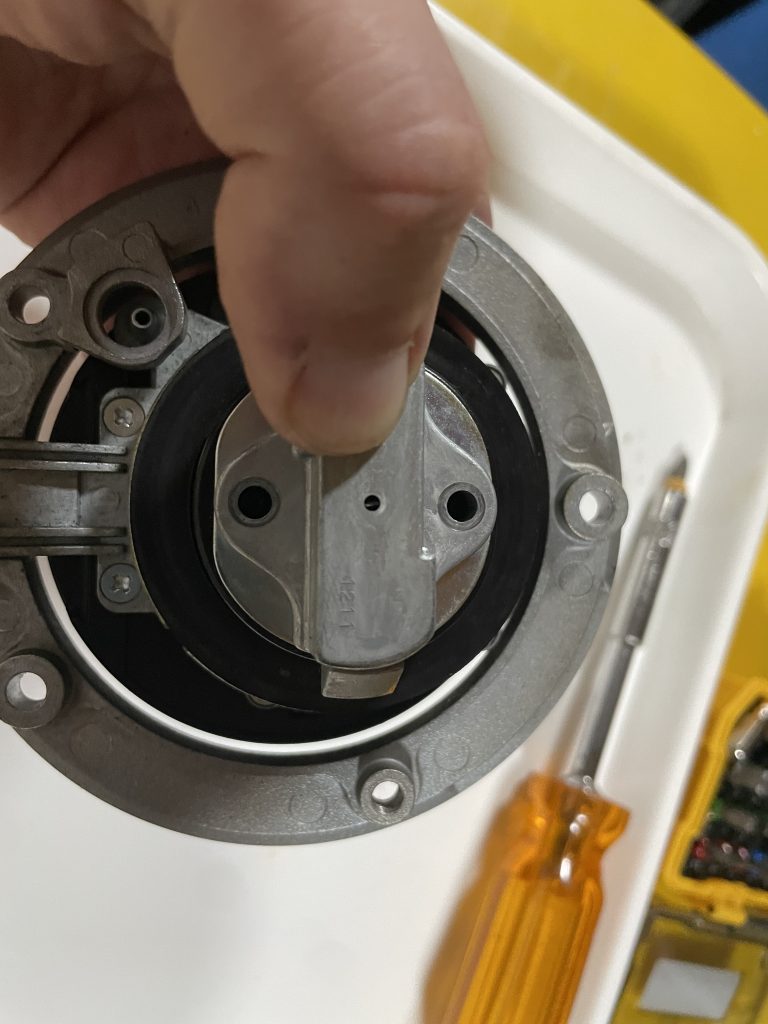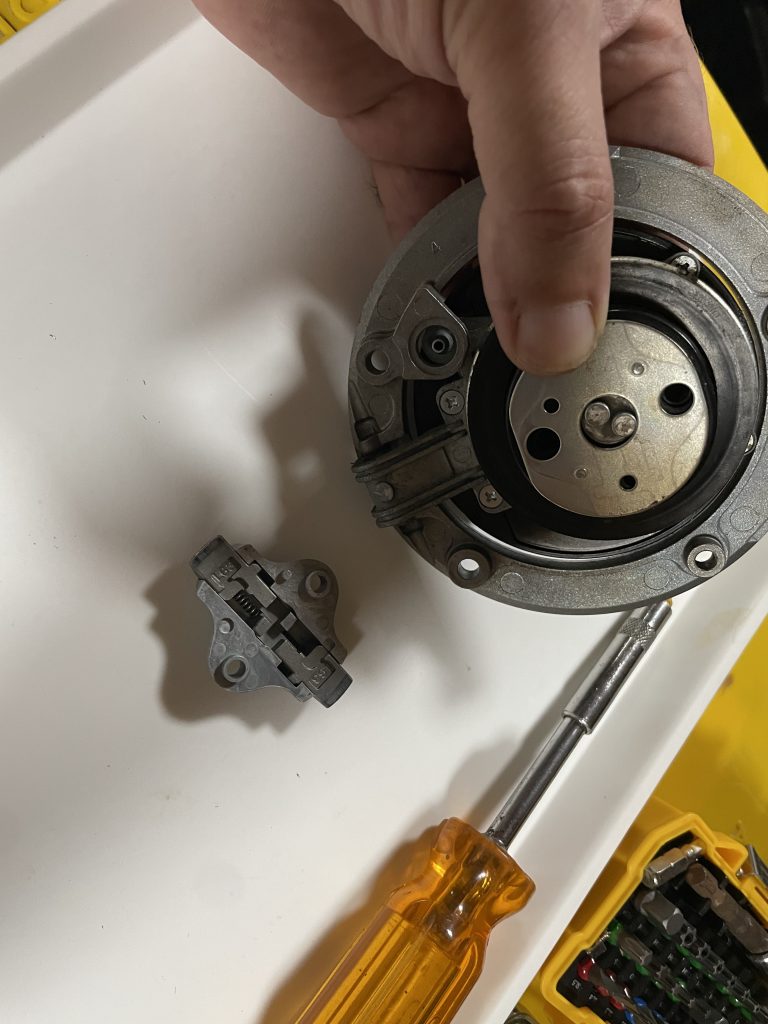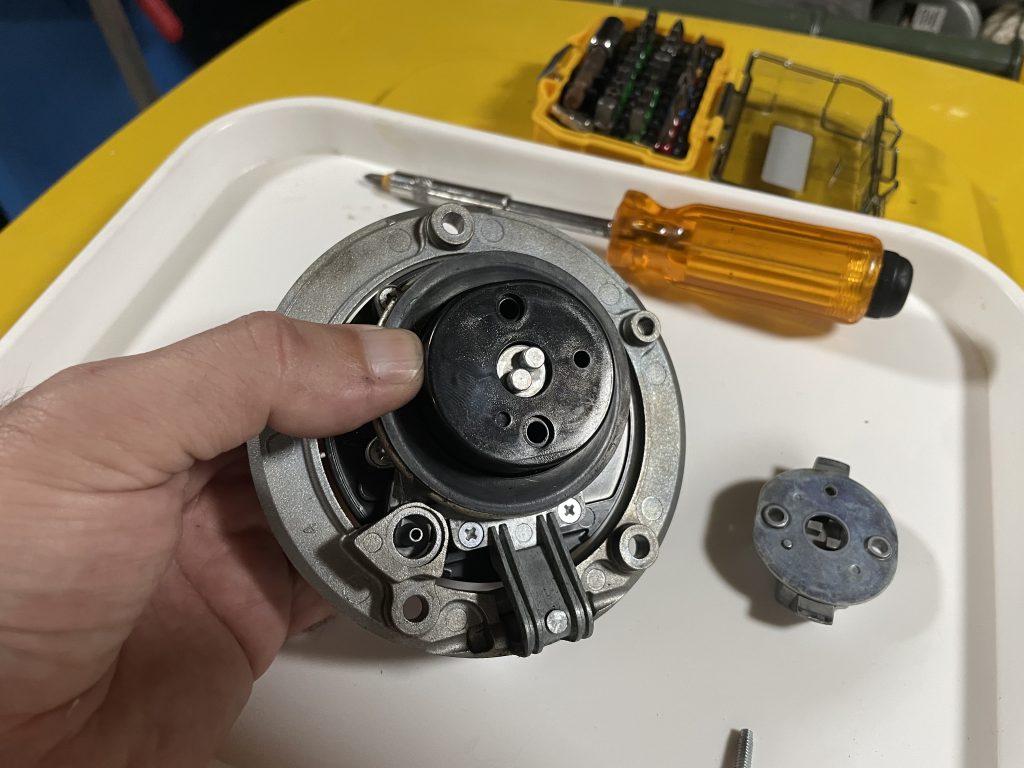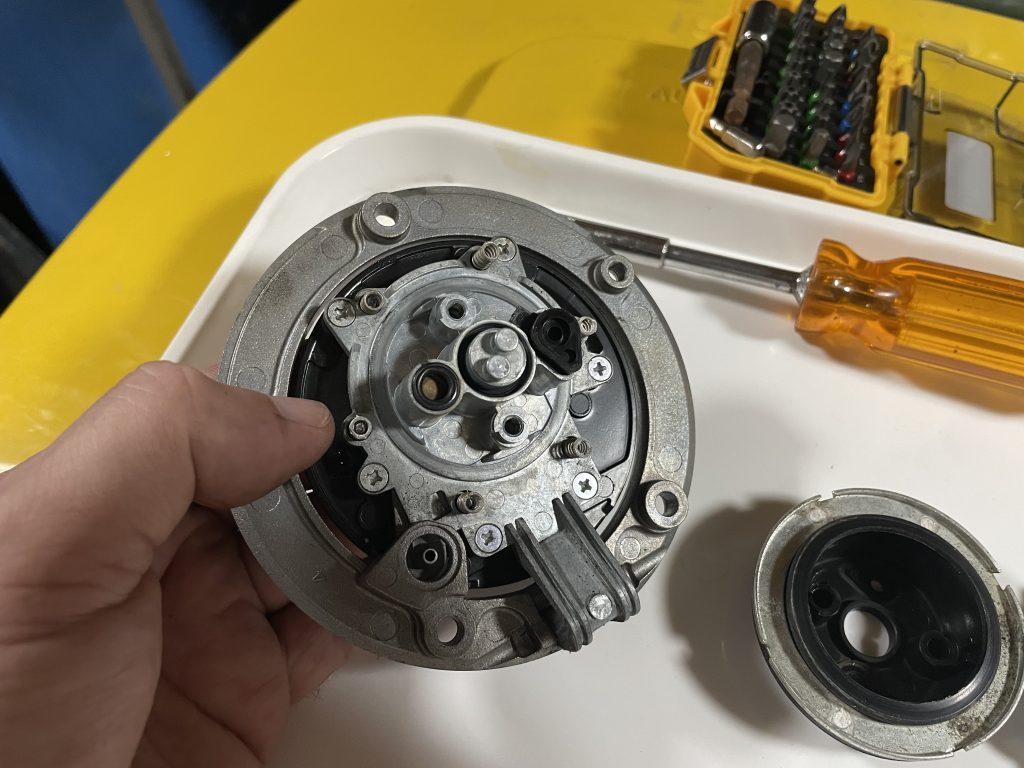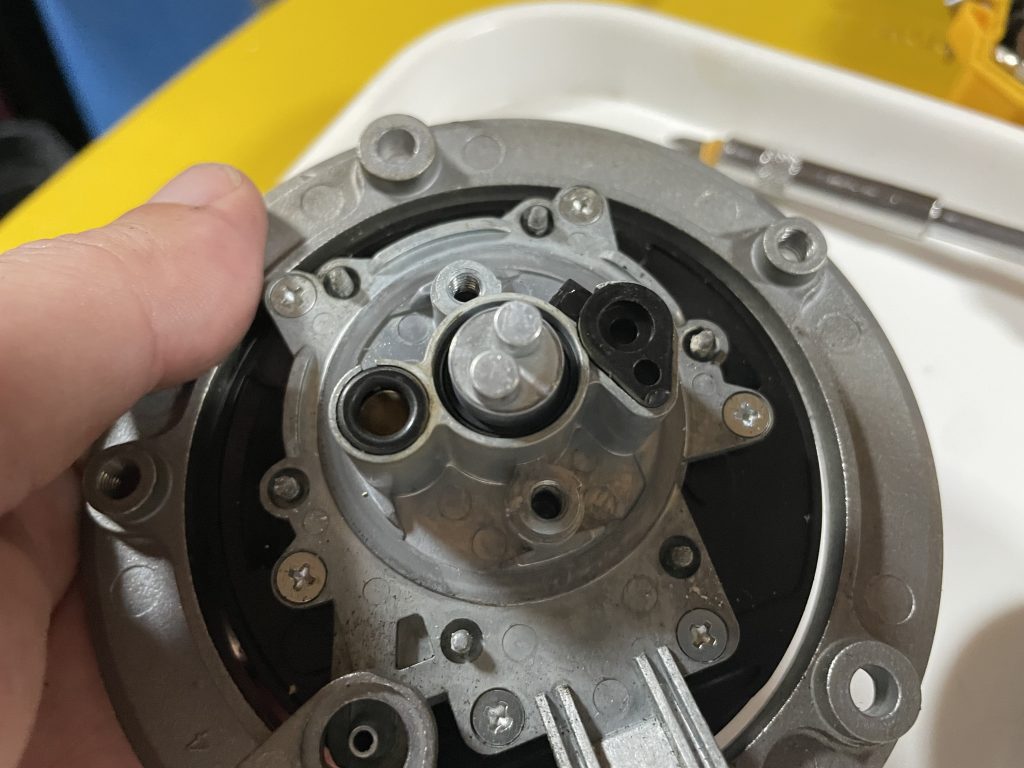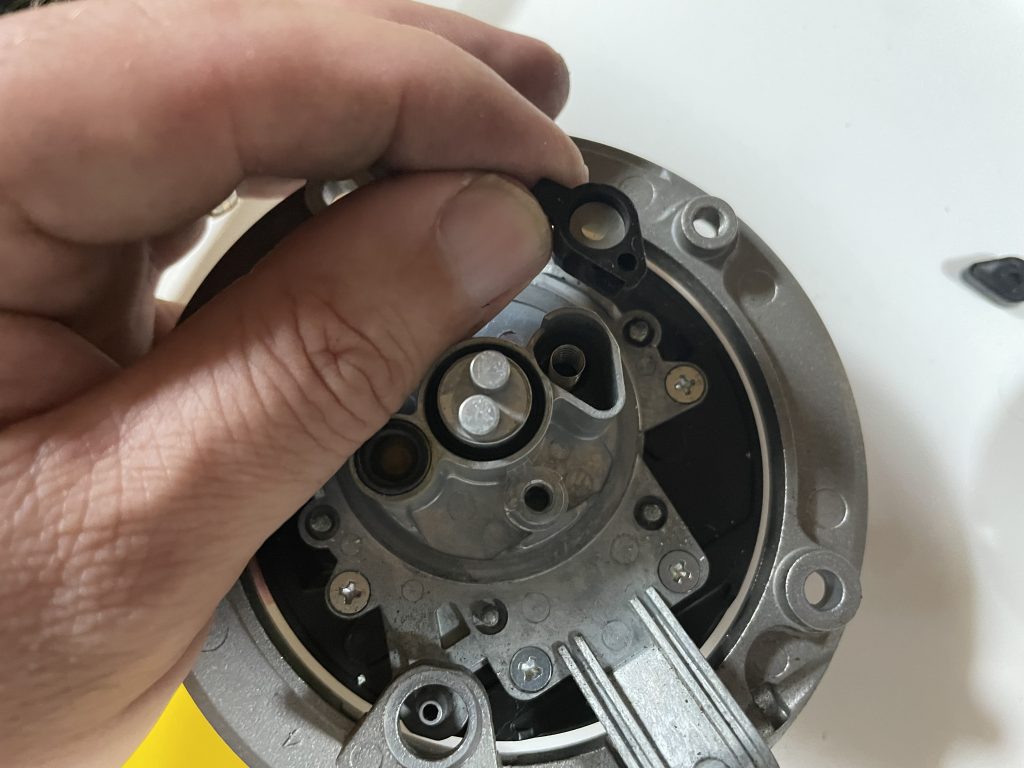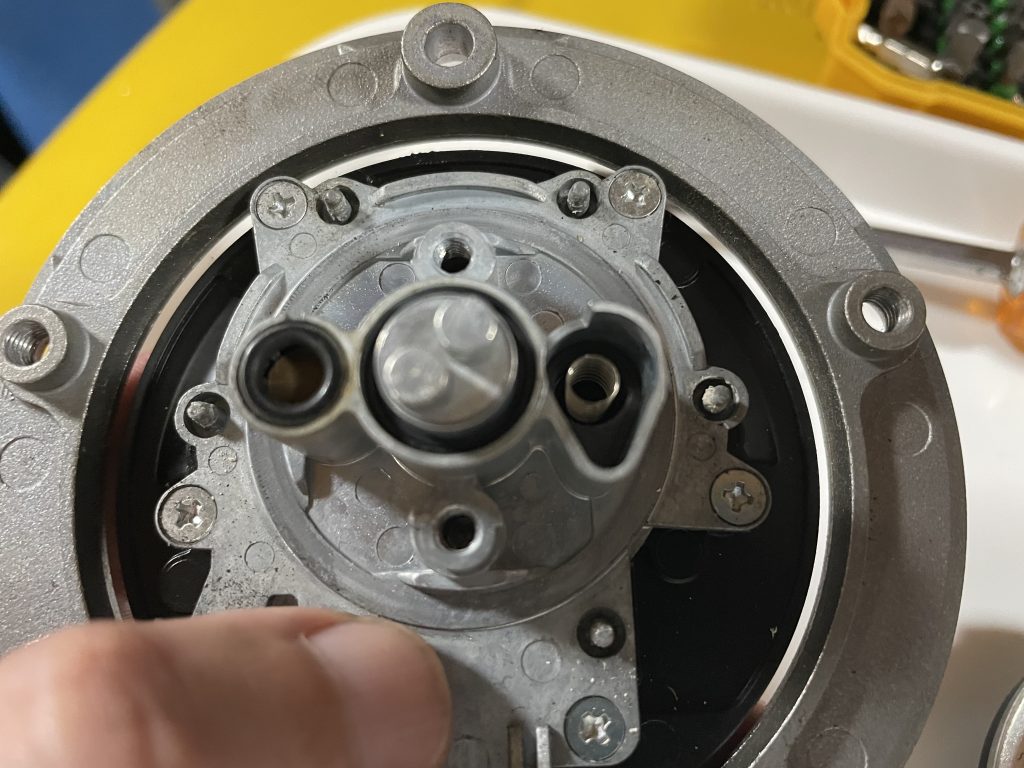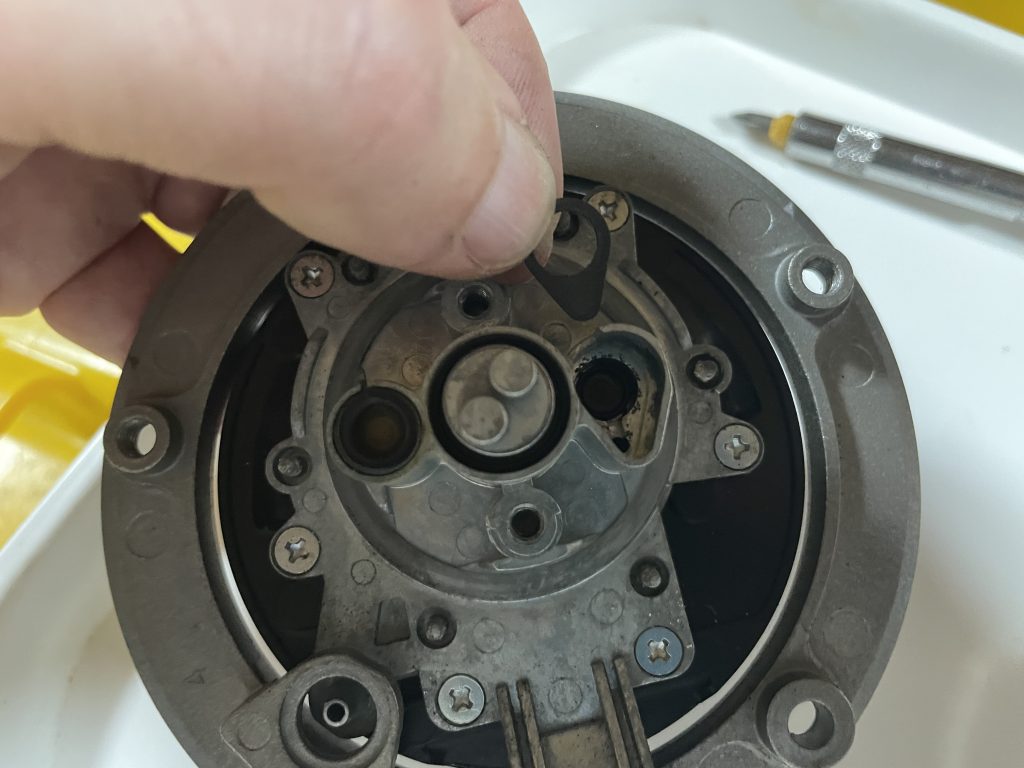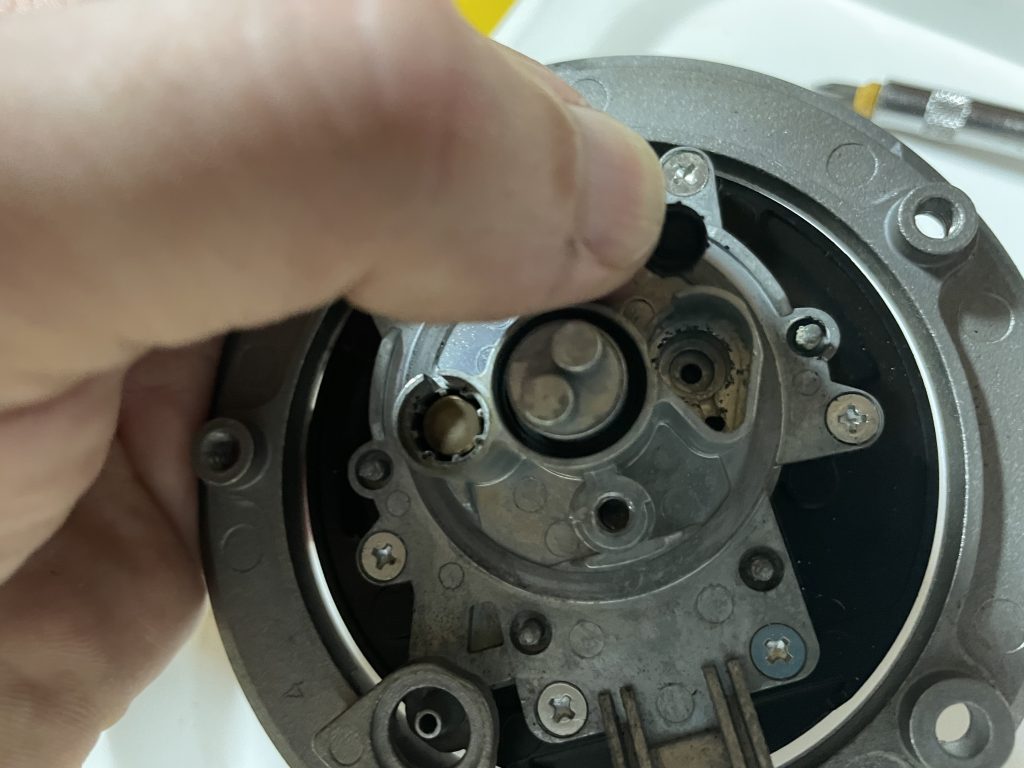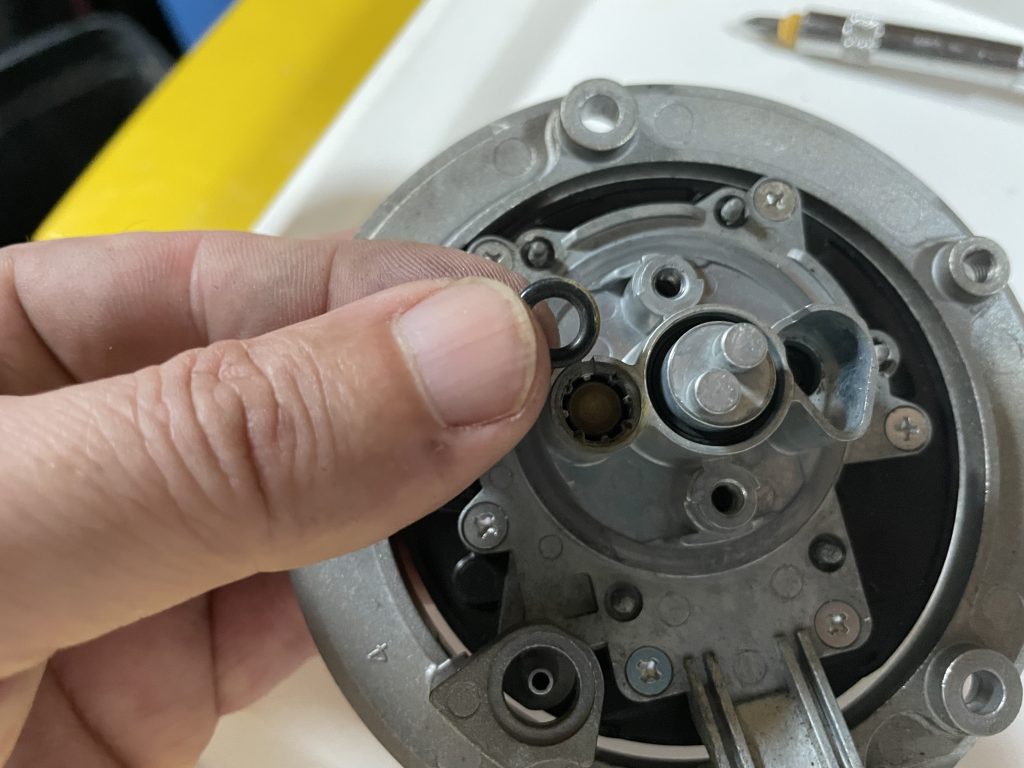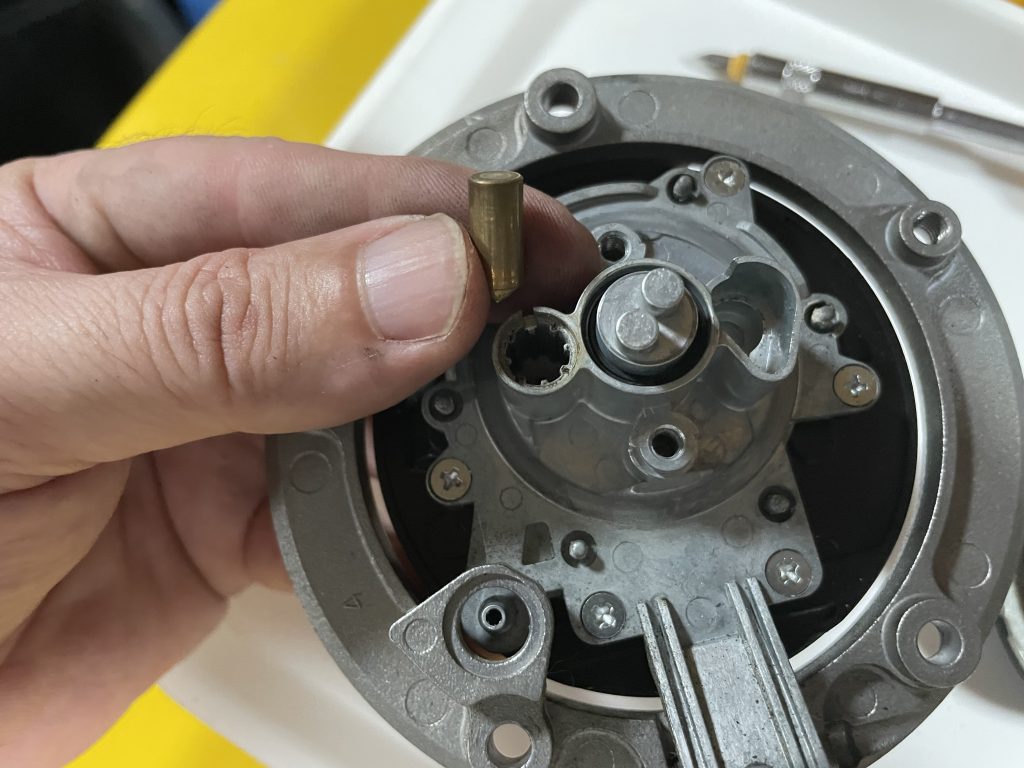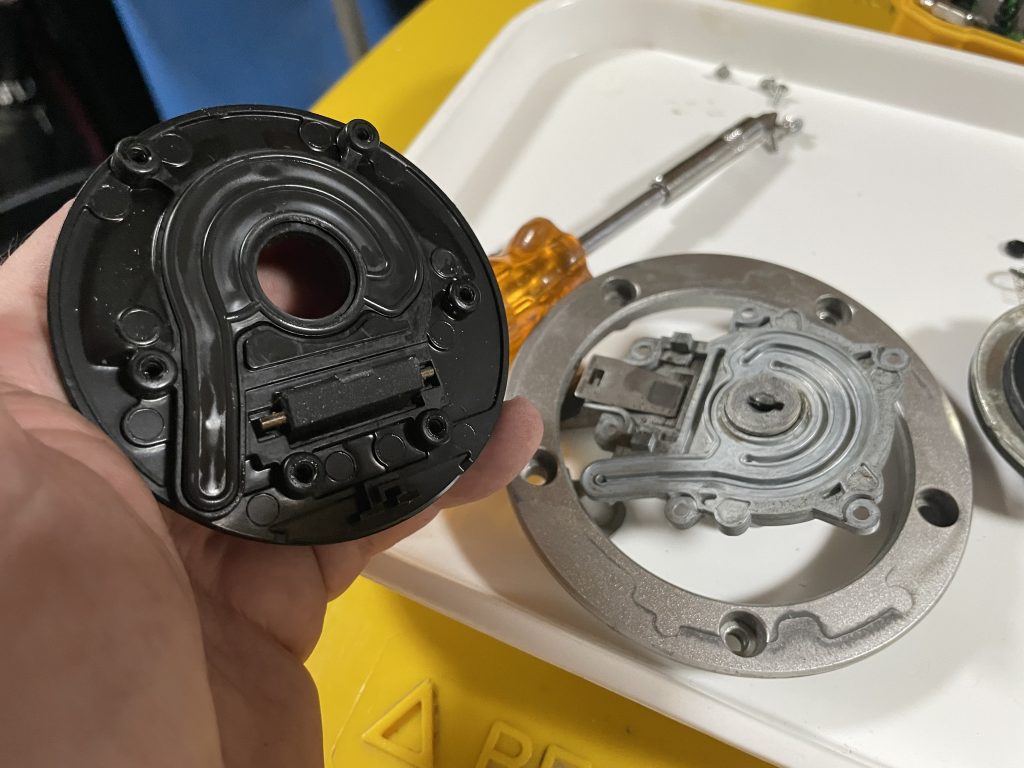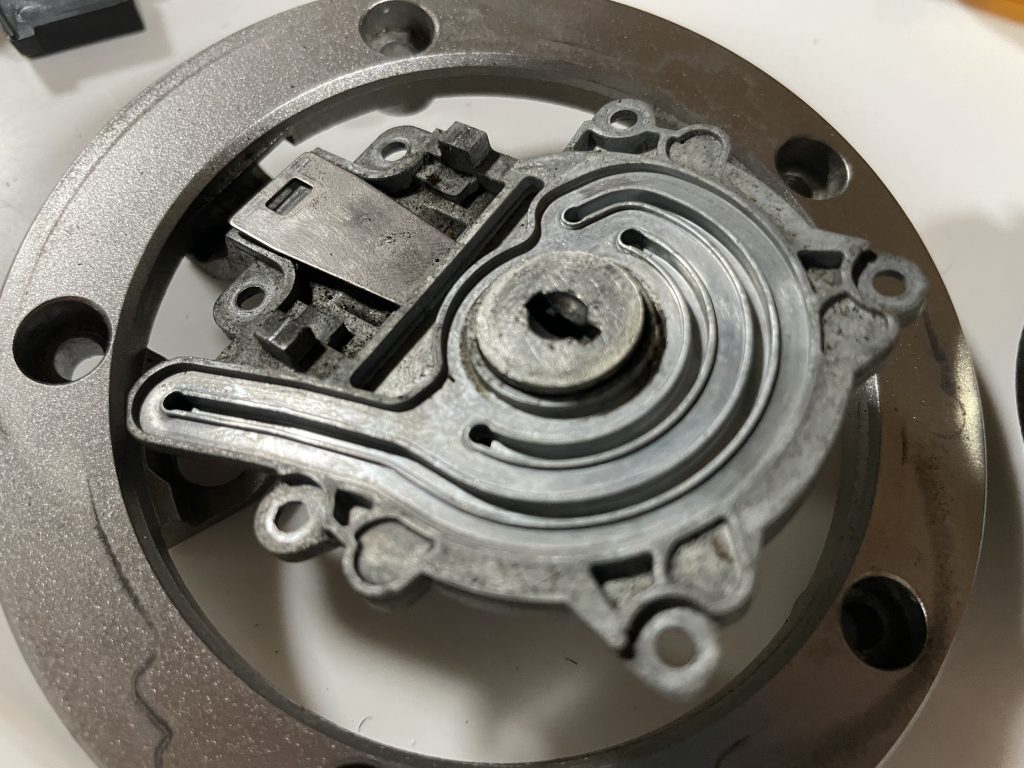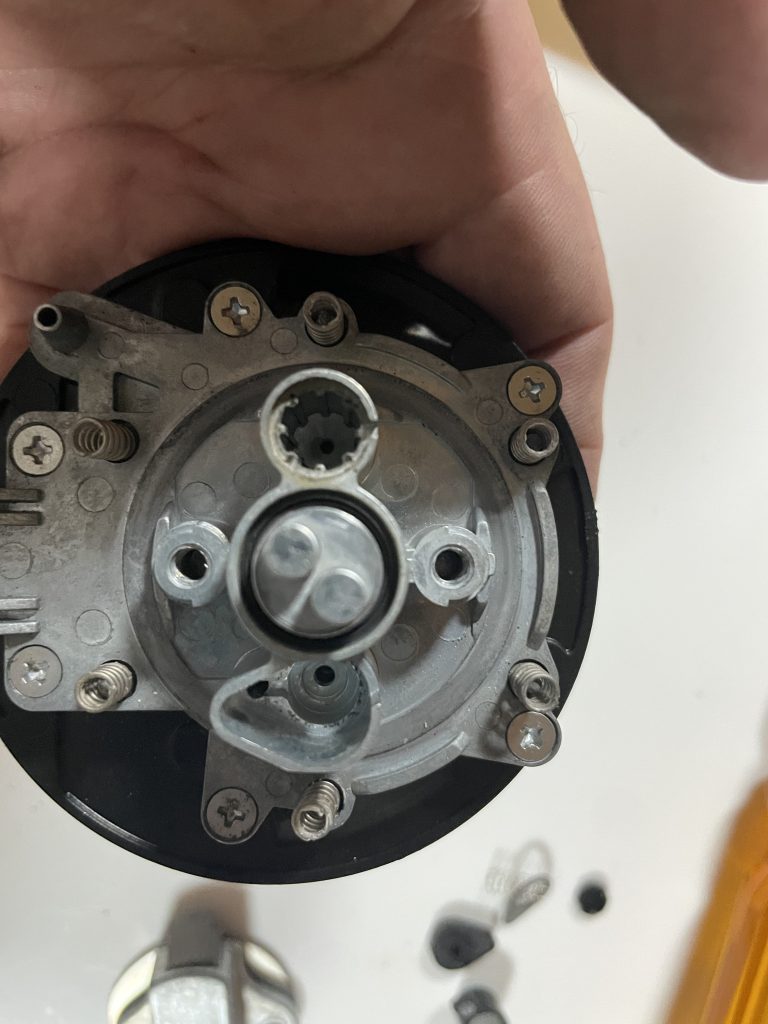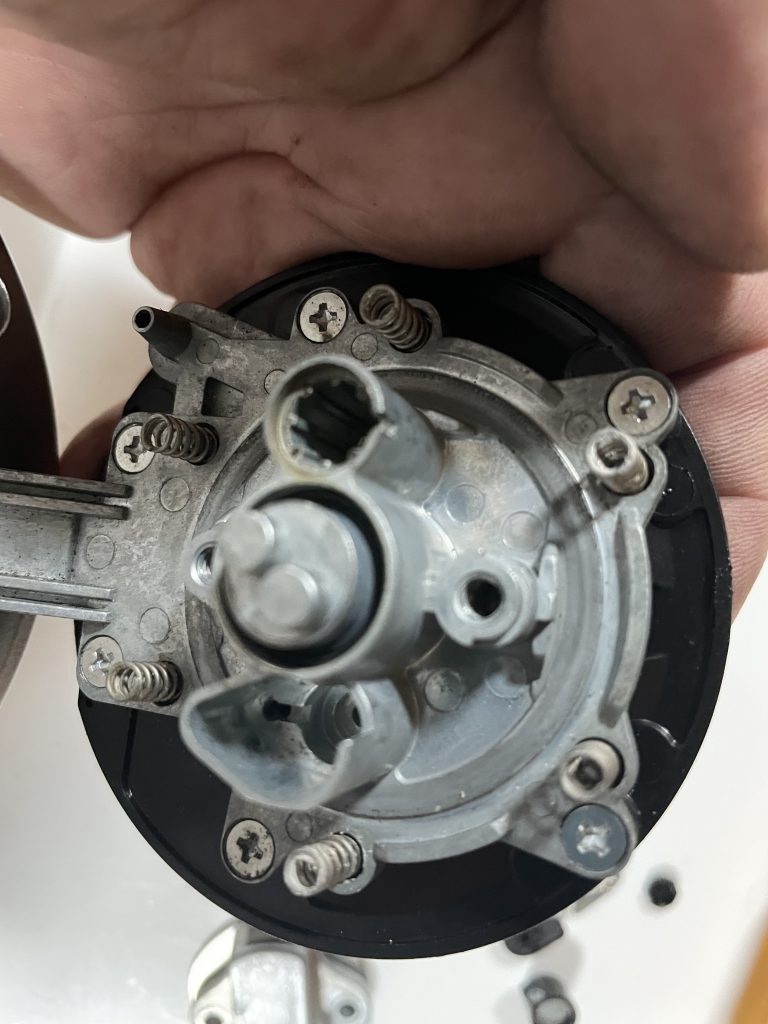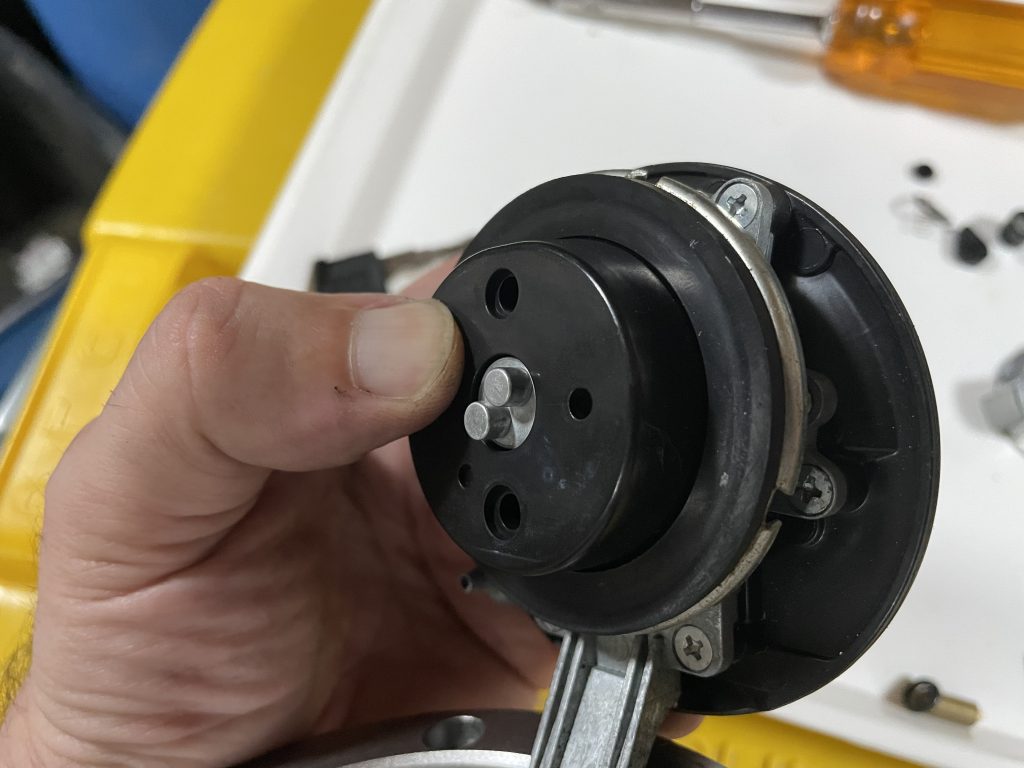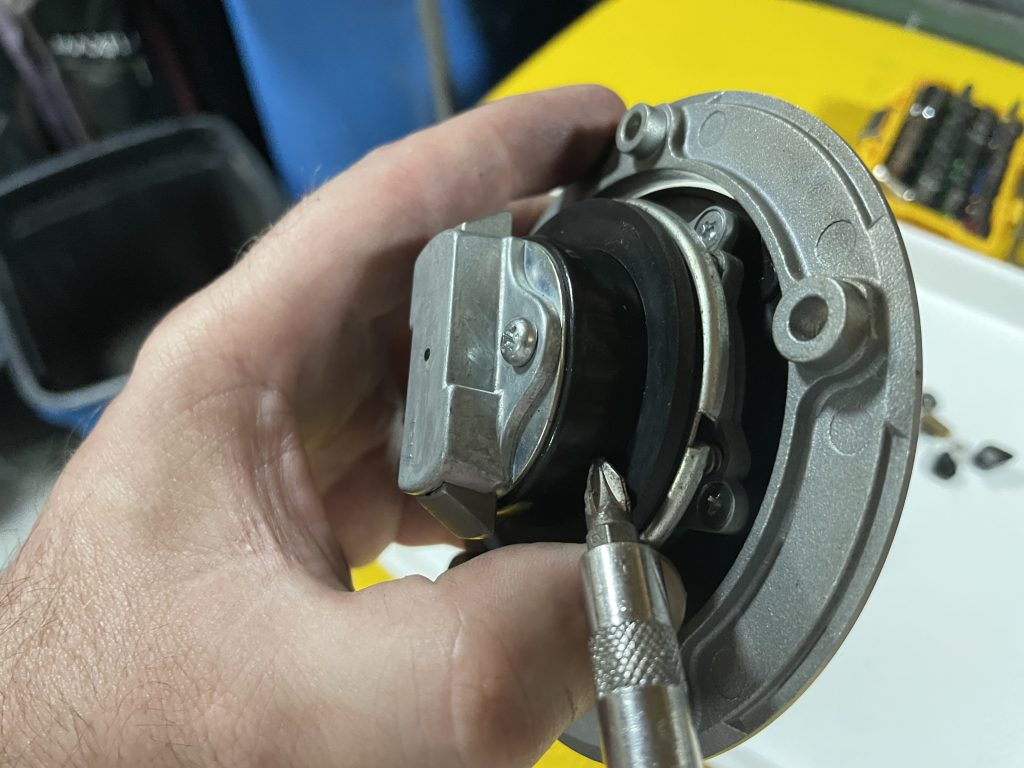To provide a cleaner, better inward pathway for fuel to be sent into the tank via the primary breather tube, and to avoid having to drill the tank, I disassembled the tank’s cap and removed the extra bits which normally provide resistance and a valve type of mechanism controlling pressure release and vacuum relief within the tank.
These parts are set to keep the tank air-tight and closed, until sufficient pressure builds, either positive or negative – at which point the breather will allow expansion vapour out of the tank, or allow a head of fresh air into the tank as fuel is consumed.
In my planned application I am able to vent this breather through the aux-tank, and then use the breather on that tank to finally expel any positive pressure build up, or allow it to pull fuel from the aux line into the tank, to help to relieve negative pressure.
Here is a sequence of photos showing the disassembly of the cap innards, they are complex.
Here’s where I’m planning on drilling a couple of 3mm holes to allow fuel to flow out directly from the inner chamber without having to pass through the locking mechanism.
After reassembling this without the innards, I was able to run from more flow tests through the cap, via the main breather hose.
We videod those tests, you can see them here.
